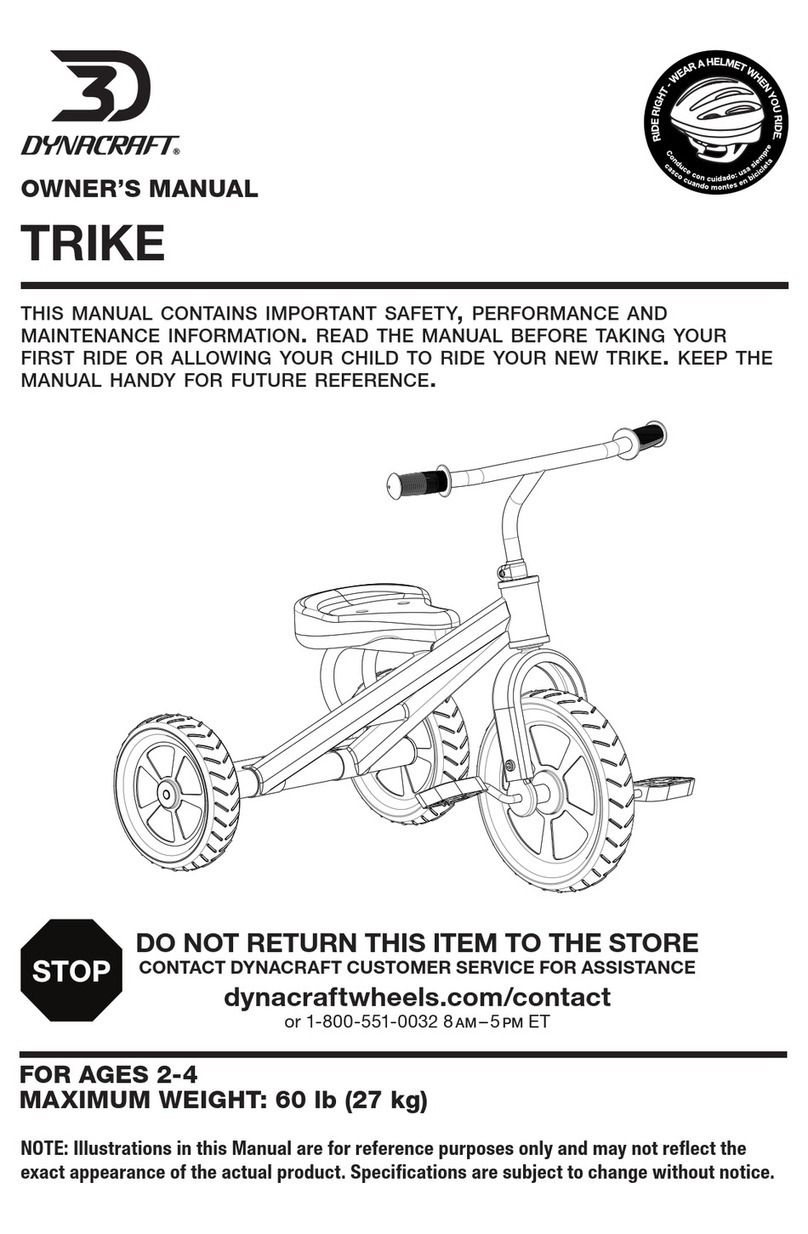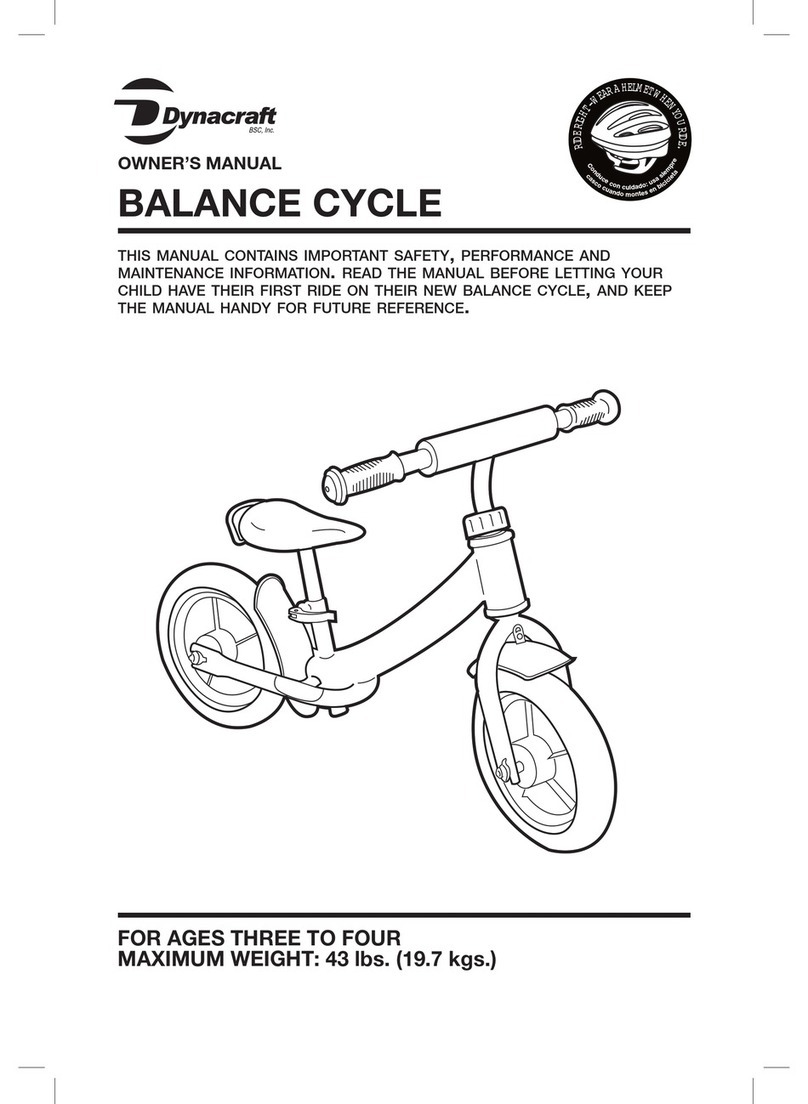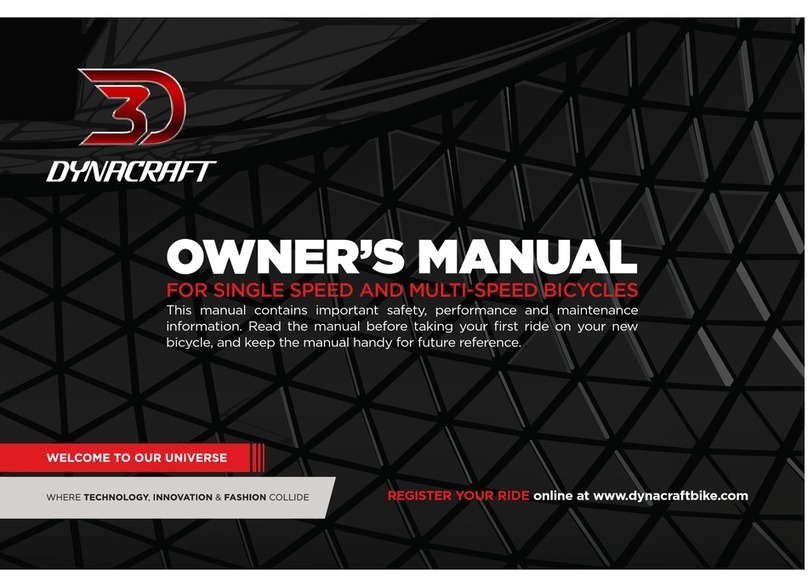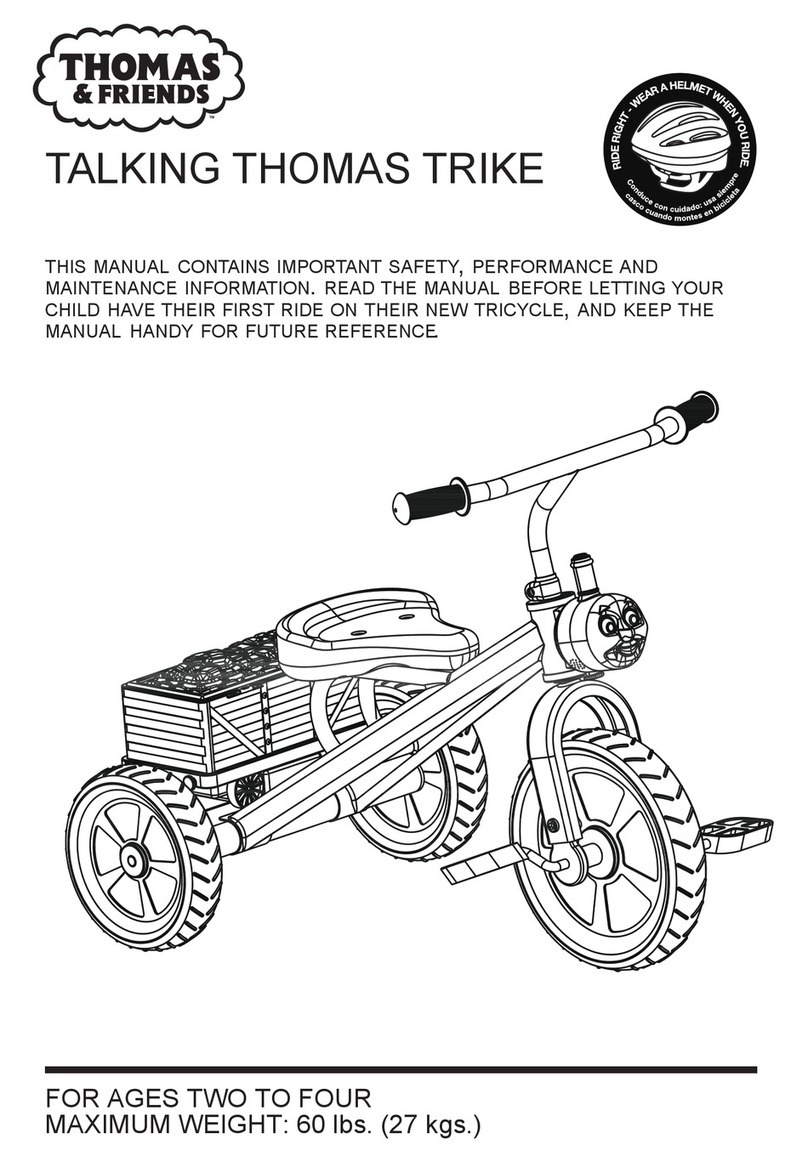AABOUT YOUR BIKE . . . . . . . . . . . . . . . . . . . . . . . . . . . . . 5
Model/Serial number Identification. . . . . . . . . . . . . . . . . . . 5
Customer service . . . . . . . . . . . . . . . . . . . . . . . . . 5
Spaces to write info . . . . . . . . . . . . . . . . . . . . . . . . 5
BBEFORE YOU RIDE . . . . . . . . . . . . . . . . . . . . . . . . . . . . . 6
Parts list . . . . . . . . . . . . . . . . . . . . . . . . . . . . 6
Tool list . . . . . . . . . . . . . . . . . . . . . . . . . . . . . 6
Frame sizing . . . . . . . . . . . . . . . . . . . . . . . . . . . 7
Rules of the road/safety tips . . . . . . . . . . . . . . . . . . . . . 8
Night riding . . . . . . . . . . . . . . . . . . . . . . . . . . . 10
Safety checklist. . . . . . . . . . . . . . . . . . . . . . . . . . 11
CBICYCLE ASSEMBLY . . . . . . . . . . . . . . . . . . . . . . . . . . . . 12
Getting Started . . . . . . . . . . . . . . . . . . . . . . . . . .12
1. Pedals . . . . . . . . . . . . . . . . . . . . . . . . . . . . 12
2. Seat . . . . . . . . . . . . . . . . . . . . . . . . . . . . 13
3. Testing Seat Clamp and Post Clamp Tightness . . . . . . . . . . . . .14
4. Handlebar/Stem . . . . . . . . . . . . . . . . . . . . . . . .14
5. Testing Handlebar and Stem Tightness . . . . . . . . . . . . . . . 15
6. Front Wheel . . . . . . . . . . . . . . . . . . . . . . . . . . 16
7. Brakes . . . . . . . . . . . . . . . . . . . . . . . . . . . 17
8. Coaster Brakes . . . . . . . . . . . . . . . . . . . . . . . . 17
9. Testing Brake Functions . . . . . . . . . . . . . . . . . . . . . 17
10. Rotor Assembly . . . . . . . . . . . . . . . . . . . . . . . . 18
11. Training wheels . . . . . . . . . . . . . . . . . . . . . . . .20
CONTENTS
CONTENTS
AABOUT YOUR BIKE . . . . . . . . . . . . . . . . . . . . . . . . . . . . . 6
Model/Serial Number Identification . . . . . . . . . . . . . . . . . . 6
Customer Service . . . . . . . . . . . . . . . . . . . . . . . . . 6
Spaces to Write Info . . . . . . . . . . . . . . . . . . . . . . . . 6
BBEFORE YOU RIDE . . . . . . . . . . . . . . . . . . . . . . . . . . . . . 7
Parts List . . . . . . . . . . . . . . . . . . . . . . . . . . . . 7
Tool List . . . . . . . . . . . . . . . . . . . . . . . . . . . . 7
Frame Sizing . . . . . . . . . . . . . . . . . . . . . . . . . . . 8
Rules of the Road/Safety Tips . . . . . . . . . . . . . . . . . . . . 8
Night Riding . . . . . . . . . . . . . . . . . . . . . . . . . . .11
Safety Checklist. . . . . . . . . . . . . . . . . . . . . . . . . . 12
CBICYCLE ASSEMBLY . . . . . . . . . . . . . . . . . . . . . . . . . . . . 13
Getting Started . . . . . . . . . . . . . . . . . . . . . . . . . .13
1. Pedals . . . . . . . . . . . . . . . . . . . . . . . . . . . . 14
2. Seat . . . . . . . . . . . . . . . . . . . . . . . . . . . . 15
3. Testing Seat Clamp and Post Clamp Tightness . . . . . . . . . . . . .16
4. Handlebar/Stem . . . . . . . . . . . . . . . . . . . . . . . .16
5. Testing Handlebar and Stem Tightness . . . . . . . . . . . . . . . 17
6. Front Wheel . . . . . . . . . . . . . . . . . . . . . . . . . . 18
7. Brakes . . . . . . . . . . . . . . . . . . . . . . . . . . . 19
8. Testing Brake Functions . . . . . . . . . . . . . . . . . . . . . 20
9. Rotor Assembly . . . . . . . . . . . . . . . . . . . . . . . . 21
10. Training Wheels . . . . . . . . . . . . . . . . . . . . . . . .24
4


































